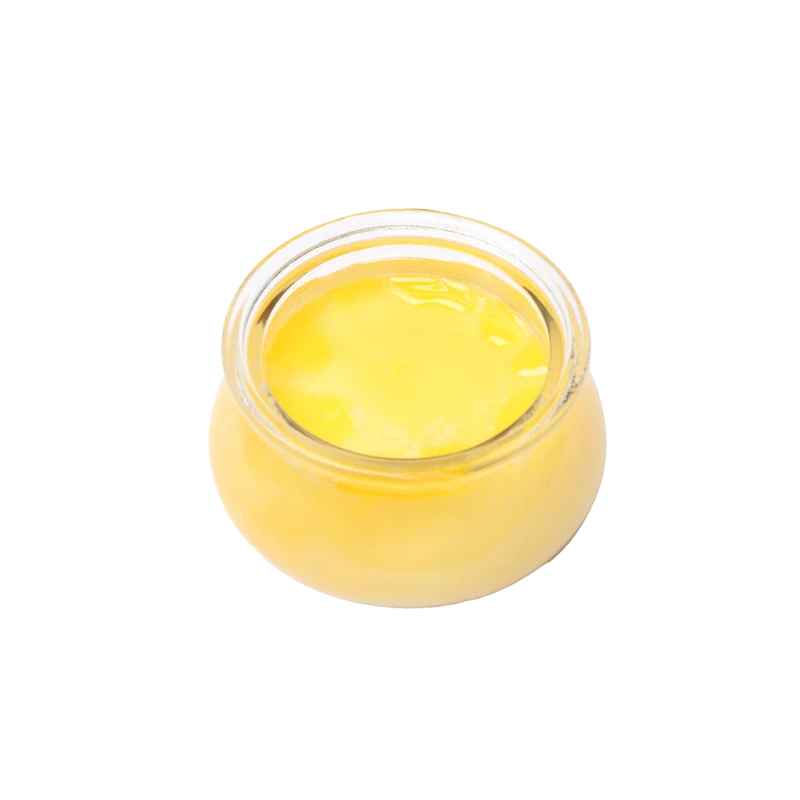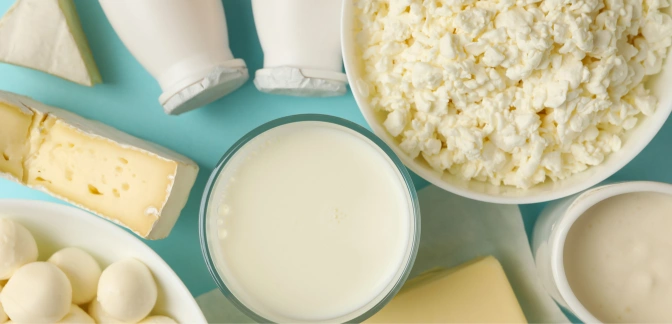Ghee — Nutrients, Health Benefits, And Shopping Tips

Written by Listonic Team
Last update on September 6, 2024
Ghee nutrients
Nutrition facts
Amount per 100 g
Calories
🔥 876 kcal
| Nutrition per: 100 g | Value | % Daily Value* |
|---|---|---|
| Carbs | 0 g | - |
| Fiber | 0 g | - |
| Sugars | 0 g | - |
| Glycemic Index | 0 | - |
| Protein | 0 g | - |
| Sodium | 2 mg | 0.09% |
| Total Fat | 99 g | 126.92% |
*The % of Daily Value (DV) tells you how much a nutrient in a serving of food contributes to a daily diet. 2,000 calories a day is used for general nutrition advice.
Ghee facts & tips
Health benefits
- Rich in healthy fats, which provide energy and support cell function.
- Contains antioxidants such as Vitamin E, which help protect the body from free radicals and reduce inflammation.
- Supports digestive health by promoting the production of digestive enzymes.
- High smoke point, making it suitable for cooking at high temperatures without breaking down and releasing harmful compounds.
- May support immune function due to its content of butyrate, a short-chain fatty acid with anti-inflammatory properties.
Health risks
- High fat content particularly in saturated fats, which can raise cholesterol levels and increase the risk of heart disease when consumed frequently.
- High calorie content which can contribute to weight gain if consumed frequently or in large quantities, particularly as a cooking fat or spread.
- Potential for oxidation as ghee can oxidize when exposed to high heat, potentially forming harmful compounds if used excessively in high-temperature cooking.
- Potential for lactose intolerance symptoms though ghee is clarified, trace amounts of lactose and casein may remain, potentially causing symptoms in highly sensitive individuals.
How to choose ghee
Ghee should be clear and golden when liquid and have a smooth, uniform texture when solid. It should have a rich, nutty aroma, characteristic of butter that has been properly clarified.
Avoid ghee that shows signs of discoloration or has an off smell, which can indicate rancidity. Containers that are not sealed or show oil leakage should also be avoided, as they suggest the ghee has been compromised.

How to store ghee
Ghee should be stored in a cool, dark place, preferably in an airtight container. Proper storage maintains its flavor and shelf life for several months. Ghee remains stable at room temperature.
Exposure to light and heat can cause ghee to go rancid. Avoid storing near heat sources, and always keep the container tightly sealed. Refrigeration can further extend its shelf life, ensuring it stays fresh and free from contamination.
✅ Extra Tip
How long does it last?
Ghee can last for 6-12 months when stored in an airtight container in a cool, dark place. Once opened, it should be consumed within 6 months. Proper storage helps maintain its flavor and nutritional value, making it a versatile cooking fat.
What to do with leftovers?
Leftover ghee can be used in a variety of culinary and non-culinary ways. In the kitchen, ghee is a versatile cooking fat that adds a rich, buttery flavor to dishes like curries, sautéed vegetables, baked goods, and sauces. It’s particularly popular in Indian cuisine and is prized for its high smoke point, making it ideal for frying and roasting.
Beyond cooking, ghee has several other uses. It can be used in DIY beauty treatments as a natural moisturizer for the skin and hair, helping to hydrate and nourish. Ghee can also be applied to dry, cracked skin on the hands or feet to promote healing and softness. Additionally, ghee is sometimes used in traditional remedies for soothing minor burns or cuts, thanks to its anti-inflammatory properties. Ghee can also be used in spiritual or religious practices, particularly in the lighting of lamps during rituals.
👨⚕️️ Medical disclaimer
Discover products from other categories
Listonic Team
Fact-checked
Our editorial team checked this article to make sure it was accurate at the time of publishing it.
Get the top-rated shopping list app on your phone!







